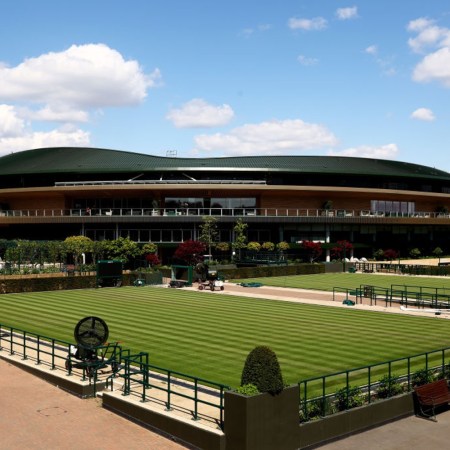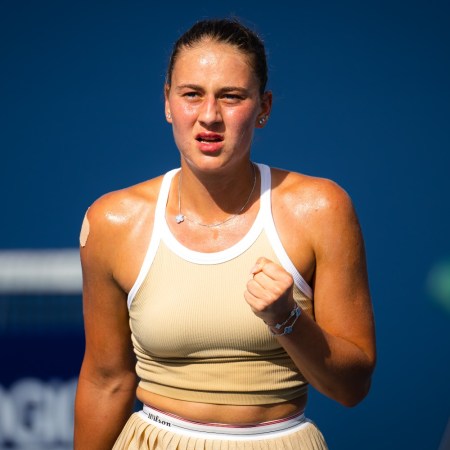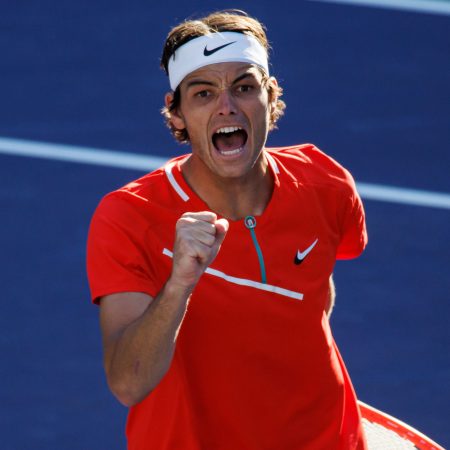Rafael Nadal’s physical style of play has been taking its toll on his body for years now. The same could be said of Novak Djokovic. As for Roger Federer? Father Time is surely creeping up on him; several players in the top 25 of the ATP rankings weren’t even kindergarten-age when the Swiss won his first Grand Slam.
And yet, those three just finished in the top spots on the ATP rankings for the fifth time in the 2010s and the second year in a row, further separating themselves from the rest of the field. Individually, they’re among the top players of all time. And collectively, they should be viewed as one of sport’s greatest dynasties — and surely the best of the decade.
In the NFL, the New England Patriots posted a 3-2 record in Super Bowls over the decade, and the Golden State Warriors did the same in the NBA Finals. Major League Baseball’s San Francisco Giants and the National Hockey League’s Chicago Blackhawks both went 3-0 in their respective World Series and Stanley Cup championship runs, while the WNBA’s Minnesota Lynx were crowned champs four times. Tiger Woods had an off decade in men’s professional golf, and in women’s tennis, Serena Williams maintained her standard of excellence, building upon her chase for the all-time record among women with 12 majors.
From the 2010 Australian Open, which was won by Federer, to this year’s U.S. Open, which Nadal claimed, 40 Grand Slam tournaments — tennis’ most prestigious events — were contested. During the championship matches, which also include the French Open and Wimbledon, 38 of them featured at least one of Nadal, Djokovic or Federer, and a little more than one-third of the time, two of the three faced each other. They won 33 of them — good for more than 80% of the Slams contested over the decade.
The 2019 calendar was the second time in three years that two of them split the title haul at the majors. Djokovic won his record-setting seventh title in Melbourne and fifth overall at Wimbledon, topping Federer in what was arguably the match of the year. Aside from his fourth US Open title, Nadal claimed his 12th victory in Paris — the most anyone, male or female, has triumphed at one particular major.
Last year, all three of them won Grand Slams, with Federer defending his Australian Open title and Nadal doing the same at Roland Garros. Djokovic, who spent the first half of the year in a state of flux while dealing with an elbow injury, cemented his return to the top of the game by capturing Wimbledon and the U.S. Open. 2017 saw the resurgence of Federer as he won two Grand Slams — his first in five years — with Nadal claiming the other two. At Wimbledon and the French Open that year, Federer and Nadal were particularly tough on their respective draws: neither player dropped a set over the course of two weeks.
It was like the early- to late-aughts all over again.
Federer’s path to Grand Slam glory started back in 2003, when he won Wimbledon for the first time at the age of 21. Two years later, the emergence of Nadal was in full effect as he made his debut appearance at the French Open in 2005, and went on to win the title as a 19-year-old. Djokovic, a year younger than Nadal, didn’t join the other two as a major winner until 2008, when he took the top prize in Melbourne.
After a few frustrating seasons, though, Djokovic made the mental and physical adjustments to post one of the best campaigns of the Open Era in 2011. It takes 28 match wins to complete a calendar-year Grand Slam and that year, the Serb won 26, with his only loss coming to Federer in the French Open semifinals. Djokovic would go on to be the pacesetter among the trio over the course of the past 10 years as he won 15 Slams, followed by Nadal’s 13 and Federer’s five.
Next on the list are Andy Murray and Stan Wawrinka, who are tied with three wins apiece. It’s been Murray who’s mounted the most serious challenge to the top three. Finally breaking through at the U.S. Open in 2012 after dropping his first four major finals, the Scot would go on to win Wimbledon twice, in 2013 and ’16. Murray also snapped the stranglehold his peers had on the year-end No. 1 ranking by finishing on top in 2016. Aside from Wimbledon, he also took home the Gold Medal at the Summer Olympics for the second time and emerged triumphant at the year-end ATP Finals.
It hasn’t just been the Grand Slams where Nadal, Federer and Djokovic have dominated: they’ve also taken home the lion’s share of the tournaments at the next level, the Masters 1000 events. Nine of those are played a year, and Djokovic won 28, Nadal 20 and Federer 12 in the ‘10s.
And the thing is, none of them appear to be slowing down anytime soon, which is crucial in fending off younger contenders such as Stefanos Tsitsipas and Dominic Thiem. Of course, the Big Three can’t go on forever, but looking back at the past 10 years, they can rest assured they’ve left their mark not only on the history of tennis, but on the sports landscape as a whole.
Related: The Future of Men’s Tennis Is Hopefully, Finally, Probably Here
This article was featured in the InsideHook newsletter. Sign up now.


















